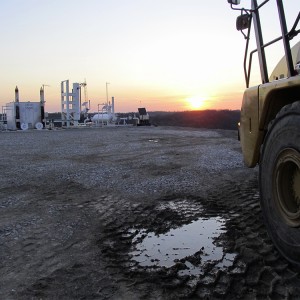Federal Water Tap, October 8: The Army Corps of Engineers’ Tattered Empire
The primary role of the Army Corps of Engineers, a key agency in the nation’s water management system, is shifting from the construction of new works to the repair and maintenance of existing ones, yet it does not have the funding to ensure its dams, levees, and river channels function properly, according to a report from the National Research Council.
The corps’ infrastructure is “wearing out faster than it is being replaced or rehabilitated,” the report states.
Because of its diverse responsibilities, the corps gets its money and its marching orders from different sources. The report points out several options for addressing old infrastructure, among them: increased federal funding, decommissioning, revenue from those who directly benefit from the projects, and public-private partnerships.
Ok, GO
Or the corps could go with this route. On October 2, the corps approved a US$2.9 billion plan to restore wetlands destroyed by the construction of a shipping channel in New Orleans in the 1960s, Nola.com reports. However, the corps says that its interpretation of federal law requires that the state of Louisiana pick up 35 percent of the tab for the Mississippi River-Gulf Outlet project.
Shale Gas Release Valve
Thanks to the fracking boom, the U.S. is floating on a cloud of natural gas. This year prices sunk, the number of drilling rigs dropped, and producers, quite naturally, are looking to expand their market. To do this, they need to export, and that means liquefied natural gas (LNG) terminals.
The Federal Energy Regulatory Commission announced that it will be the lead agency for an environmental assessment of a proposed LNG terminal in Oregon, at the mouth of the Columbia River. The project includes 63 km (39 mi) of pipeline to connect with a regional gas transmission system.
Utica Assessment
Speaking of shale gas, the U.S. Geological Survey released an assessment of gas reserves in the Utica Shale formation, which underlies parts of New York, Ohio, Pennsylvania and West Virginia. The formation holds roughly 1 trillion cubic meters (38 trillion cubic feet) of technically recoverable natural gas and just under 1 billion barrels of unconventional oil, according to the USGS.
Chesapeake Bay Lawsuits
On October 3, two environmental groups have filed a lawsuit to prevent the EPA from carrying out a water-quality trading program for the Chesapeake Bay, the Baltimore Sun reports.
The next day in a separate case, a federal judge heard arguments from industry groups who are suing to overturn the EPA’s pollution limits for the bay.
The Persistence of Aridity
Dry conditions will hold steady in the Upper Great Plains, Southwest and Intermountain West through the end of the year, according to the October 4 forecast from the National Weather Service’s Climate Prediction Center. The Mississippi River Delta and the Southern Plains states will see some improvement.
Research Dollars
The National Science Foundation and the U.S. Department of Agriculture recently gave out some US$27 million to researchers studying the interactions between climate change, land use and water resources.
Federal Water Tap is a weekly digest spotting trends in U.S. government water policy. To get more water news, follow Circle of Blue on Twitter and sign up for our newsletter.
Brett writes about agriculture, energy, infrastructure, and the politics and economics of water in the United States. He also writes the Federal Water Tap, Circle of Blue’s weekly digest of U.S. government water news. He is the winner of two Society of Environmental Journalists reporting awards, one of the top honors in American environmental journalism: first place for explanatory reporting for a series on septic system pollution in the United States(2016) and third place for beat reporting in a small market (2014). He received the Sierra Club’s Distinguished Service Award in 2018. Brett lives in Seattle, where he hikes the mountains and bakes pies. Contact Brett Walton




Leave a Reply
Want to join the discussion?Feel free to contribute!